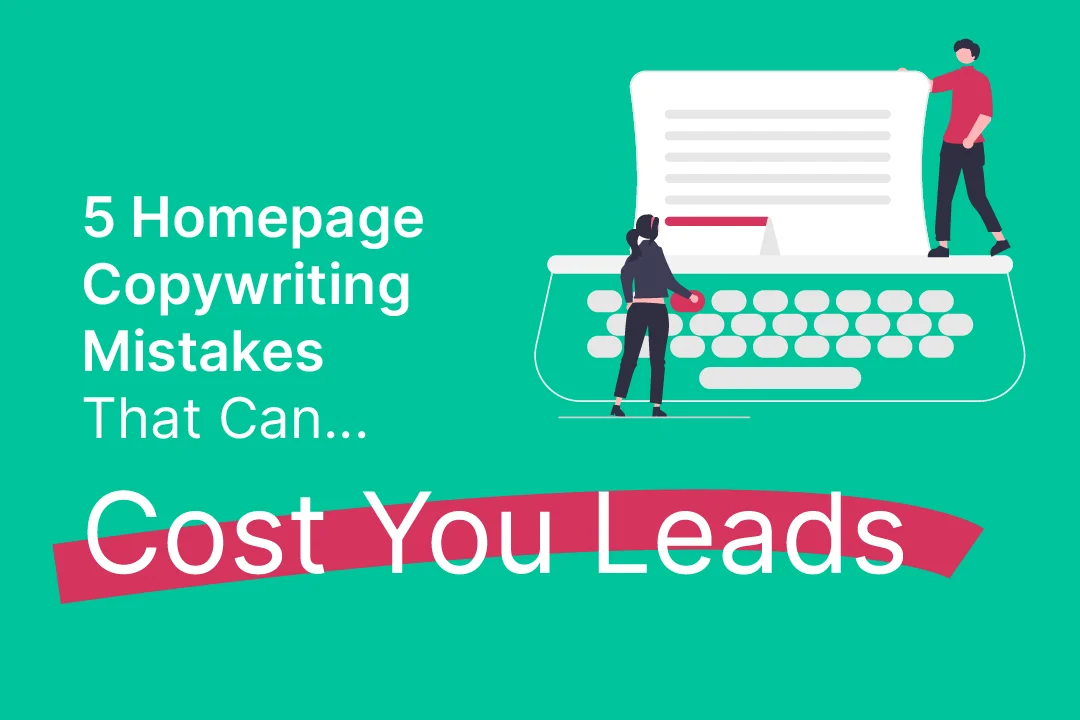If successful, your website attracts your ideal audience and converts valuable visits into leads or sales. While visitors judge a business by the look of its website, even the most aesthetically pleasing site can struggle if its homepage copywriting suffers from critical errors.
Effective web content balances user needs with search engine optimization (SEO) best practices. This strategic approach ensures your website resonates with your target audience while achieving strong search rankings. Mastering the art of homepage copywriting requires careful consideration, as the words you choose can significantly impact your website’s ability to generate leads.
This article dives into common homepage copywriting mistakes to avoid. By understanding these pitfalls, you can maximize your website’s potential and achieve a return on investment for your professional website design services.
Homepage copywriting mistake #1: weak and unclear opening
A common yet critical homepage copywriting mistake lies in a weak and vague opening. Customers are ultimately driven by the end benefit a service or product provides. Therefore, the hero section, or “above-the-fold” content on your homepage, needs to clearly communicate this value proposition.
A strong and concise introduction serves the vital purpose of capturing the reader’s attention immediately and prompting them to engage further, either by scrolling down the page or clicking on your call to action.
Some common mistakes above the fold: analysing weak homepage copy
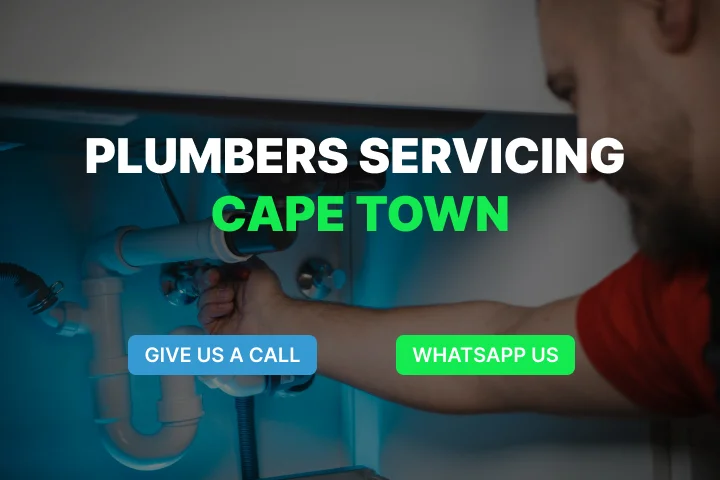
Homepage hero section mistake example #1
The hero section consists solely of a large heading “Plumbers Servicing Cape Town” accompanied by two call-to-action buttons, “Give us a Call” and “WhatsApp Us.” While the heading clearly shows the geographical area in which they operate, it misses a crucial opportunity to connect with visitors.
An effective hero section should immediately address the target audience’s pain points. It should communicate the company’s expertise in solving those problems and establish them as the preferred choice for plumbing services in Cape Town.
Additionally, presenting two competing CTAs without a clear, guiding message can leave visitors feeling confused about the desired next step. This confusion can ultimately lead them to abandon the website and return to search results to explore competitor offerings.
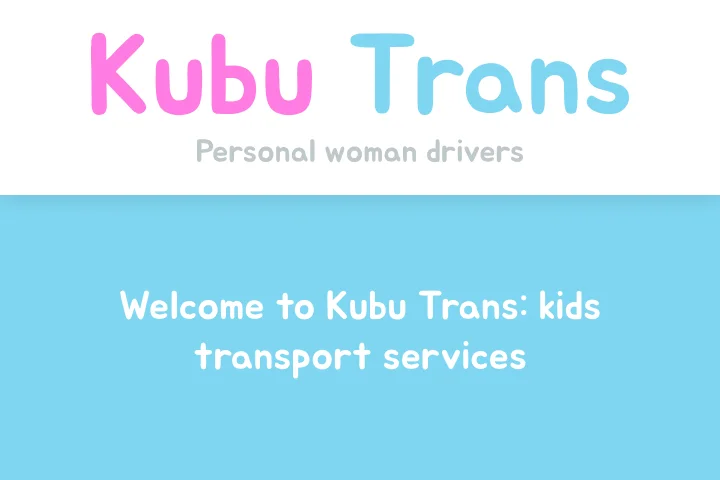
Homepage above the fold copy mistake example #2
While Kubu Trans utilises a visually appealing colour scheme and fonts that effectively convey a child-oriented brand identity, the website’s hero section falls short in terms of user engagement. A prominent logo occupies a significant portion of the fold, potentially hindering valuable space for key messaging.
Furthermore, the heading “Welcome to Kubu Trans: Kids Transport Services” adopts a mixed tone, blending formal and informal language. This approach could create confusion for the target audience of parents.
Most importantly, the hero section fails to capitalise on the opportunity to highlight the unique benefits of choosing Kubu Trans. Without a clear value proposition and a compelling call to action, the website may struggle to convert visitors into paying customers.
Writing homepage copy mistake #2: jargon and complex language
Effective homepage copy should be clear, concise, and easily understood by your target audience. However, businesses often fall into the trap of using jargon and overly complex language in an attempt to sound professional. This can have the opposite effect, alienating potential customers and sending them clicking away in confusion.
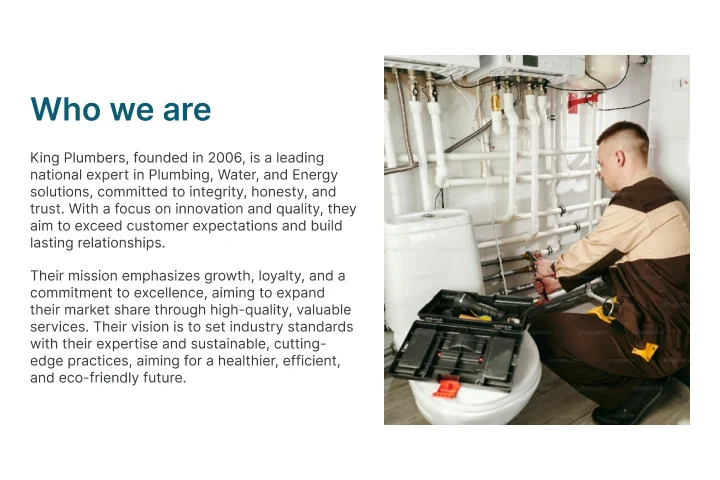
This image showcases a common homepage mistake made by plumbing companies. The content relies on technical jargon and complex language that may leave potential customers confused
Imagine you’re having a conversation with your ideal customer. You wouldn’t bombard them with technical terms or convoluted sentences, right? Your homepage copy should follow the same principle. By using simple, everyday language, you can ensure your message resonates with your audience and effectively communicates the value you offer.
Remember, your homepage is your website’s first impression. Jargon and complex language create a barrier between you and your potential customers. Instead, focus on clear and compelling copy that highlights the benefits you provide and motivates visitors to take action.
Homepage copy mistake #3: neglecting the power of storytelling
In the competitive world of online marketing, capturing a visitor’s attention within seconds is crucial. Effective homepage copywriting goes beyond simply listing your services. It’s about weaving a compelling narrative that resonates with your target audience. This is where the power of storytelling comes into play.
Storytelling allows you to connect with your audience on an emotional level. By sharing a relatable scenario or highlighting the positive transformation your services provide, you can pique their interest and establish yourself as a trusted solution.
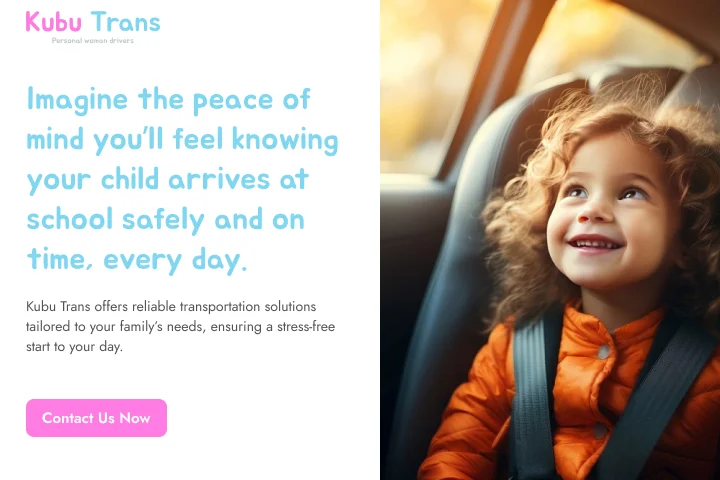
Imagine, instead of stating “We provide safe and reliable transportation for your children,” you paint a picture: “Imagine the peace of mind you’ll feel knowing your child arrives at school safely and on time, every day. Kubu Trans offers reliable transportation solutions tailored to your family’s needs, ensuring a stress-free start to your day.”
The emotional connection fostered through storytelling makes your message more memorable and increases the likelihood of converting website visitors into loyal customers.
Tired of Missing Leads? Get a Lead-Generating Website for R299/Month
Our affordable website design service transforms your small business website into a lead-generating machine. For just R299 per month, you get everything you need:
- Professional website design
- Compelling copywriting that attracts customers
- Secure domain name and website hosting
- Powerful SEO optimization for better search ranking
- Ongoing maintenance to keep your site fresh
Homepage copywriting mistake #4: lack of clear call-to-actions (CTAs)
In the fast-paced world of online interactions, a visitor’s attention span is precious. An effective homepage should not only capture their interest but also guide them towards the desired action. This is where clear calls to action (CTAs) come into play. A well-placed CTA acts as a roadmap, directing website visitors towards the next step in their customer journey.
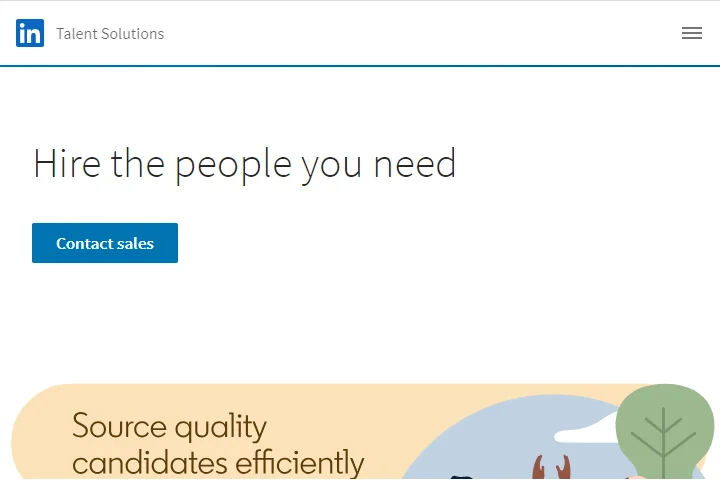
Example: Call to Action Clarity on LinkedIn’s Hiring Page
This screenshot showcases LinkedIn’s talent acquisition landing page. The call to action (CTA) “Hire the people you need” effectively communicates the overall benefit of the service.
Followed by button label with a more specific message that clarifies the user’s next step.
The absence of clear CTAs can leave visitors feeling confused and unsure of what to do next. Imagine landing on a homepage filled with compelling information about a product or service, but lacking a clear instruction on how to inquire further, request a quote, or make a purchase.
This missed opportunity can lead to lost leads and hinder your website’s ability to convert visitors into paying customers. By incorporating clear and concise CTAs throughout your homepage, you empower your audience to take action and ultimately drive conversions for your business.
Homepage copywriting mistake #5: Overusing Buzzwords and Superlatives
Crafting compelling homepage copy requires a delicate balance. While you want to showcase the value you offer, overusing buzzwords and superlatives can have the opposite effect. Buzzwords are industry jargon or generic terms that lack concrete meaning. Examples include “cutting-edge,” “game-changing,” or “disruptive.” Superlatives, while attention-grabbing, can lose their impact when used excessively. Phrases like “best in the business” or “number one choice” become meaningless if not backed by evidence.
An overreliance on these elements creates an inauthentic and impersonal tone. Potential customers are bombarded with generic claims that fail to resonate on a deeper level. Instead, focus on crafting clear and concise language that highlights the unique benefits you offer. Use specific examples and data points to substantiate your claims. Tell customer stories that showcase the positive impact of your services. By prioritizing authenticity and focusing on the value proposition, you can create a homepage that resonates with your target audience and builds trust with potential customers.
Bonus: Checklist for Writing an Effective Homepage Copy that Converts and Generates Leads for Your Small Business
Crafting a compelling homepage copy is crucial for attracting visitors and turning them into paying customers. Here’s a checklist to guide you in writing effective copy that converts:
1. Know Your Audience:
- Who are you trying to reach with your website?
- What are their pain points and challenges?
- What are their goals and aspirations?
2. Craft a Clear and Compelling Headline:
- Use strong verbs and highlight benefits that resonate with your target audience.
- Keep it concise and easy to understand.
3. Tell a Story:
- Use storytelling to connect with your audience on an emotional level.
- Highlight the transformation your services provide.
- Focus on the benefits, not just the features.
4. Focus on Clarity and Benefits:
- Avoid technical jargon and complex language.
- Use clear and concise language that is easy for everyone to understand.
- Focus on the benefits your business offers and how they solve the customer’s problems.
5. Include a Strong Call to Action (CTA):
- Tell visitors what you want them to do next, whether it’s contacting you, scheduling a consultation, or downloading a free resource.
- Make the CTA button clear, concise, and visually appealing.
6. Optimise for Search Engines (SEO):
- While clear language is important, include relevant keywords that potential customers might use to search for your services.
- Don’t overdo it though, prioritize readability over keyword stuffing.
7. Proofread and Edit:
- Ensure your copy is free of grammatical errors and typos.
- Ask someone else to review your copy for clarity and flow.
